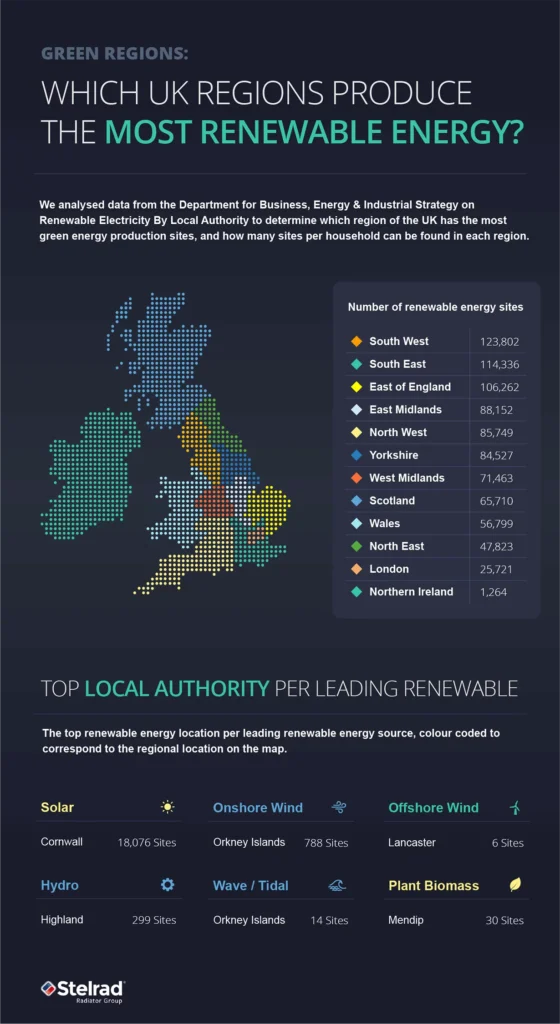Introduction: The Green Revolution is Here
The United Kingdom is at the forefront of a green economic transformation. As the country races toward its legally binding goal of achieving net zero greenhouse gas emissions by 2050, the economic impact is already clear: Britain’s net zero economy is expanding at a remarkable rate, outpacing the rest of the economy in growth, job creation, and investment. The green sector is not only addressing the climate crisis but also reshaping the country’s industrial landscape, offering lucrative employment opportunities, and bolstering energy security.
This blog explores the key drivers behind Britain’s net zero economy, highlights the opportunities and challenges ahead, and provides a data-driven analysis of how this sector is leading the way into a sustainable future.
The Net Zero Economy: By the Numbers
Explosive Growth
According to recent reports, Britain’s net zero economy grew by 10% in 2024, contributing £83.1 billion in gross value added (GVA) — a measure of economic productivity. This growth is three times faster than the overall economy, which has been sluggish due to global uncertainties.
| Year | Net Zero Economy Growth (%) | UK GDP Growth (%) |
|---|---|---|
| 2021 | 6.8% | 1.5% |
| 2022 | 7.2% | 0.8% |
| 2023 | 9.0% | 0.1% |
| 2024 | 10.0% | 0.4% |
Employment Boom
The green sector currently employs around 1 million people, spanning industries such as renewable energy, electric vehicle manufacturing, sustainable construction, and carbon capture technologies. Net zero jobs tend to offer higher wages, with an average salary of £43,076, which is £5,600 more than the national average.
Regional Growth
While London remains a hub for clean energy investment, Scotland, the West Midlands, Yorkshire & the Humber, and the South West are emerging as net zero powerhouses. Scotland alone saw net zero jobs increase by 20% in 2024, contributing £9.1 billion to its economy.
Top Net Zero Regions by Growth Rate (2024)
| Region | Net Zero Job Growth (%) | Net Zero GVA Contribution (£bn) |
| Scotland | 20% | 9.1 |
| West Midlands | 17% | 8.5 |
| Yorkshire & Humber | 15% | 7.8 |
| South West | 14% | 7.2 |

Why the UK’s Net Zero Economy is Thriving
1. Government Policy and Investment
The UK government’s Net Zero Strategy has been a key driver of growth. Policies such as the Green Industrial Revolution plan, clean energy subsidies, and investment in offshore wind and hydrogen infrastructure have created a favorable business environment.
- The UK has pledged £12 billion in public investment in green projects over the next decade.
- The Contracts for Difference (CfD) scheme has been instrumental in driving renewable energy investments.
- New incentives are boosting battery storage, hydrogen production, and carbon capture projects.
2. The Rise of Renewable Energy
Britain has become a world leader in offshore wind energy, producing 40% of Europe’s total offshore wind power. In 2024, renewable energy sources accounted for 54% of the UK’s electricity generation, up from 42% in 2021.
| Energy Source | 2021 Share (%) | 2024 Share (%) |
| Wind | 24% | 32% |
| Solar | 5% | 9% |
| Hydro | 2% | 3% |
| Biomass | 11% | 10% |
| Fossil Fuels | 47% | 35% |
3. Innovation and Startups
The UK is home to 22,000 businesses operating in the net zero economy, with a large proportion being innovative startups focused on cleantech solutions. Small and medium-sized enterprises (SMEs) make up 94% of the sector, proving that the green transition is accessible to businesses of all sizes.
Some of the most promising green startups include:
- Octopus Energy (renewable energy supplier)
- Arrival (electric vehicle manufacturer)
- Carbon Clean Solutions (carbon capture technology)

Challenges on the Road to Net Zero
1. Political and Policy Uncertainty
While the UK has ambitious climate targets, political inconsistency remains a challenge. Shifts in government policies can deter investment in long-term green projects. For example, delays in offshore wind licensing and mixed messaging about heat pump subsidies have caused concerns among investors.
2. Skills Gap and Workforce Transition
The rapid growth of the net zero economy demands a workforce with specialized skills in engineering, digital technology, and renewable energy. However, there is a shortage of trained professionals in these fields. To bridge this gap, the UK needs to invest heavily in education, apprenticeships, and reskilling programs.
3. Infrastructure Bottlenecks
The transition to net zero requires significant upgrades to electricity grids, transport networks, and energy storage facilities. Without sufficient infrastructure, the rollout of renewables and EV charging stations will face delays.
The Future: A Net Zero Powerhouse
Despite these challenges, the UK’s net zero economy presents an extraordinary opportunity to become a global leader in sustainable development. If current trends continue, the green economy could contribute £140 billion to the UK’s GDP by 2030, supporting 1.5 million jobs.
To maintain momentum, the UK could:
- Provide long-term policy stability to encourage investment.
- Expand clean energy production, like hydrogen.
- Enhance green finance mechanisms to support startups and SMEs.
- Invest in training programs to equip the workforce with future-proof skills.
Conclusion: A Sustainable Success Story
The UK’s net zero economy is more than just an environmental initiative—it is a growth engine that is outpacing traditional industries. With strong policy support, technological innovation, and strategic investment, Britain is proving that sustainability and economic prosperity can go hand in hand. As the world shifts towards a cleaner future, the UK’s success in net zero industries offers a blueprint for other nations to follow.
The message is clear: investing in green industries is not just about saving the planet—it’s about securing economic stability, job creation, and global leadership in the industries of the future.
Dive deeper on the UK’s Net Zero strategy on its policy paper.
Feel free to explore other Environment & Renewable Energy subjects that are shaping our world today.

